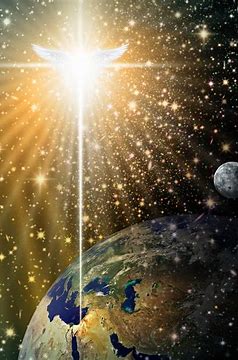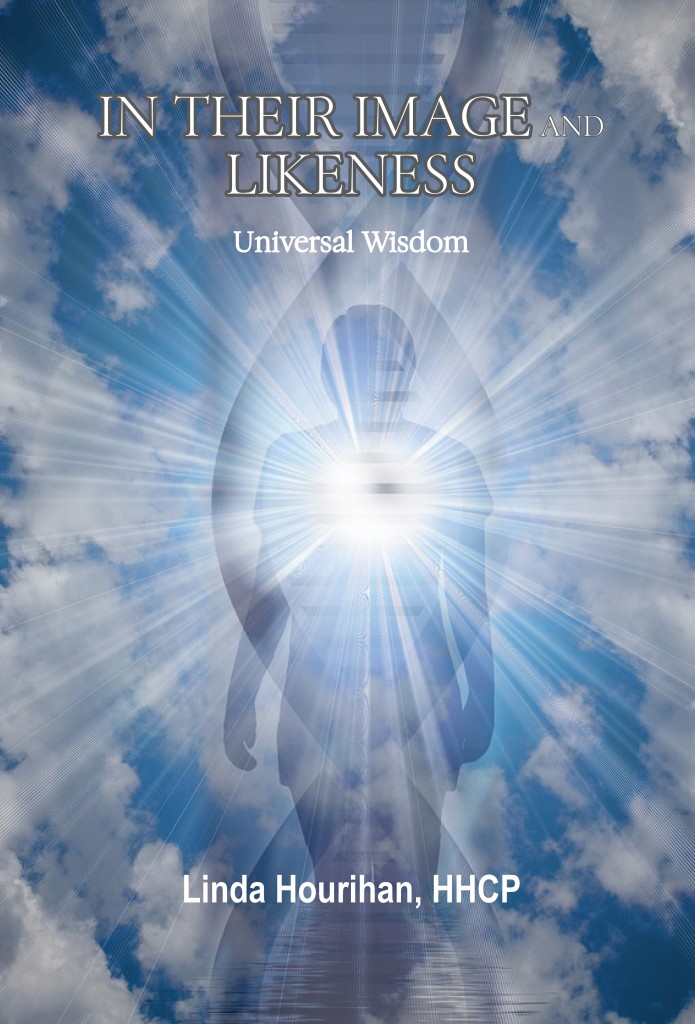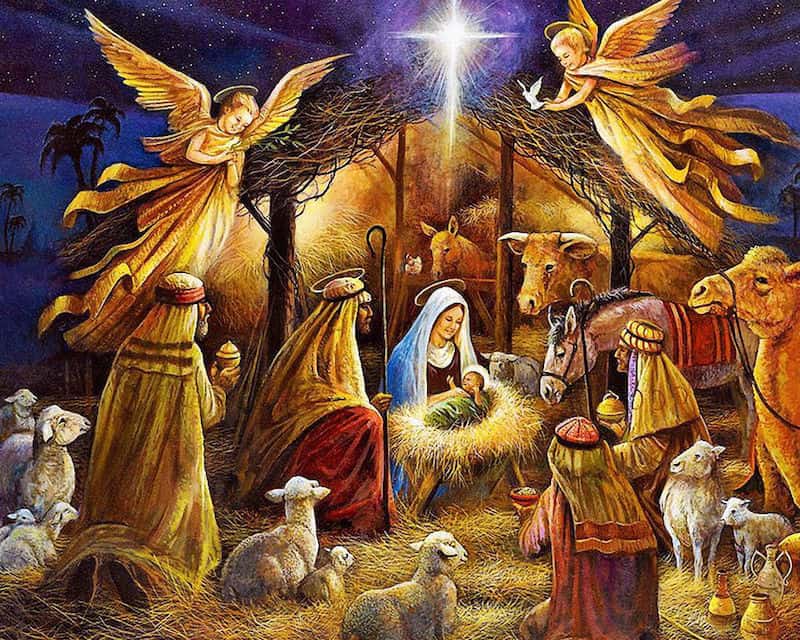“To be ignorant of the lives of the most celebrated men of antiquity is to continue in a state of childhood all our days.” Plutarch
The Christmas tree, the wreath, the mistletoe, the holly, the presents, the feasts and the parties, did they really  originate with the birth of Jesus?
originate with the birth of Jesus?
No.
Most of today’s Christmas celebrations began as the pagan celebration of Saturnalia revolving around the harvest god Saturn, for providing people with abundant crops. Saturn’s feast day was celebrated on December 17. That celebration was so popular that in the days of Nimrod, the great hunter who set himself up in opposition to the God, decided to establish a celebration of the sun god, Mithras (Mithra) on December 25, the birthday of Mithra. Nimrod, and no other person, claimed that the god of the sun, would be celebrated on December 25. Then it was decided to have the celebration last for a week. It was a week of orgies and anything goes – including all forms of debauchery with wild abandon, like thieving and murder, eating foods sacrificed to idols, and of course, child sacrifice. After his death, it was said that Mithra was Nimrod reincarnated, so that he would never die.
The myth of Santa Claus has many variations, including the Norse mythological god named Wodin, also known as Odin, who had a long white beard, in the land to the north called Vilhalla. There was also the Norse god Thor, a god of peasants and the common people. He was a jolly man with a rolly-polly belly. Thor’s element was fire and his color was red. These myths began in Iceland, with lots of fireplaces included in the myths. Thor rode in a chariot pulled by two white goats named Cracker and Gnasher. Thor successfully fought ice and snow giants and became known as the yule-god.
Then there was the real Nicholas, a teenage orphan who inherited wealth from his rich parents, and who was later termed a saint by the Catholic Church due to his secret generosity to the poorest people of his time. Nicholas only entered the Christmas story after the third century, after the birth of Jesus. Nicholas was one of the bishops who attended the Council of Nicaea in the year 325 A.D.
St. Nicholas is best remembered as the bishop who helped out a poor family with three daughters. They were so poor that they did not have dowries to get married. The night before the first daughter was to be sold as a slave, she had washed her stockings and left them in front of the fireplace to dry. In the morning she found a bag with gold in it. The same thing happened with the second daughter on the next night, and the third daughter on the night after that. They discovered it was Nicholas who saved them from being sold into slavery. He did not believe that people should own people. From then on, he was called St. Nicholas, helper of the poor and of children.
Another famous story, about St. Nicholas as told in my book, MYSTERY OF THE STURBRIDGE KEYS, occurs at the Christmas By Candlelight celebration which takes place each year in real time at Old Sturbridge Village in Sturbridge, Massachusetts each Christmas season. In this chapter, Santa Claus is relating this particular real-life story of St. Nicholas:
“Here is another quick story of how St. Nicholas helped a child. The oldest story of St. Nicholas did not become known until well after his death. In the town of Myra, which today is Anatalya in a Province of Turkey, the townspeople were celebrating the Feast of St. Nicholas, December 6. All of a sudden, a band of Arab pirates from Crete, the largest of the Greek islands, came into the district, stealing treasures from the Church of St. Nicholas, to take as booty. As they were leaving, they kidnapped a young boy named Basilios, and brought him to their king to make him a slave.
“The Arab king chose Basilios to be his personal cupbearer because he did not know the language, and would not know what the ruler was saying to those around him. Basilios did this job for a whole year, while his mother grieved for him and missed him very much, especially since he was her only child. As the next Feast of St. Nicholas Day came, the mother did not celebrate it since it was a day of mourning for her. Instead, she offered prayers for the safety and return of her son….
“Meanwhile, as Basilios was doing what he had been doing every day that year, serving the king, he was suddenly whisked away. St. Nicholas appeared to him, blessed him, and brought him back to his home in Myra. He appeared before his parents, still holding the king’s gold cup. Sailors took this story across the seas to other lands. This is how St. Nicholas also came to be known as the patron saint of sailors.”
 How far back does the Christmas tree tradition go? Do we have any biblical references?
How far back does the Christmas tree tradition go? Do we have any biblical references?
Yes.
Jeremiah 10:3, “Their ways are futile and foolish. They cut down a tree and carve an idol, and decorate it with gold and silver and fasten it securely in place with hammer and nails, so that it won’t fall over, and there stands their god like a helpless scarecrow in a garden! It cannot speak, and it must be carried, for it cannot walk. Don’t be afraid of such a god for it can neither harm nor help, nor do any good.”
The Christmas tree tradition goes back to the days of Nimrod and Ishtar. It is one of the customs begun at that time as part of the festivals of the harvest god, Saturn and the sun god, Mithras. Remember, Nimrod was mad at God for sending the flood and set himself up in opposition to God. The Christmas tree is one of the customs he began to have people celebrate something other than anything to do with God.
Santa Claus and his helpers have their mythical stories. Santa is also known as Sinterklass, Santeclaus, and Christkind, and in Germany, had not only elves, but also a weird, mysterious sidekick who people have given many names to, like, Knecht Ruprecht, and Black Peter. In the Middle Ages, Knecht Ruprecht appeared along with St. Nicholas. But while St. Nicholas was known to give presents like bags of candy, chocolate, gingerbread, peanuts and mandarin oranges to the children whose behavior was good on St. Nicholas Day, which was on December 6; Knecht Ruprecht would give switches and coal to children whose behavior was bad. Knecht Ruprecht wore either a brown or black robe, or fur. He also had a long beard, and carried a bag of ashes. Like St. Nicholas, he also rode a white horse. Knecht Ruprecht is also connected in German Folklore with Black Peter, because of the soot that covered him from his sliding down chimneys. Black Peter was a lot like the mythical house spirits and elves who were known to punish the misdeed of children.
This story is said to have circulated so parents could maintain order in their homes and in society. These little dark, impish characters were also known as Pelznickle, Ru-Klas, Swarthy, Dark One, Dark Helper, Hans Trapp, Krampus, Grampus, Zwarte Piets, Furry Nicholas, Rough Nicholas, and Julbuk.
Some Christian sects of the 1830s are said to have known him as a demon, evil one, the devil and Satan.
Back when Constantine ruled the Roman Empire, at the end of his life, he became Christian and wanted to rule the world. He thought this would best accomplished by using religion, namely Christianity. To sway people over to Christianity, since the pagan Saturnalia was so popular as well as most of the Mithra celebrations, Constantine decided to put the birth of the Son of God, Jesus Christ, on the birth of the sun god, Mithra. In that light, every time we celebrate today’s Christmas holiday, we are still honoring a pagan god on his feast day.
What is wrong with that?
Stephen is the first martyr of the Christian faith, stoned to death on December 26. The apostle Paul was in complete agreement with the stoning of Stephen prior to Paul’s conversion when Jesus Christ, appeared to him post-resurrection on the road to Damascus. Paul was trained as a Pharisee as his father had been.
Why was Stephen martyred?
Stephen preached against the pagan Saturnalia and Mithra rituals, including orgies, breaking the Ten Commandments, eating foods sacrificed to idols and for speaking against child sacrifice on December 25. These rituals were to be celebrated under penalty of death. If anyone did not offer your first born to be burned to death at the temple, then they also got to be burned to death at the temple. They thought this supreme sacrifice would bring them enlightenment. Fear was a tremendous motivating force, as some still use it today.
 We say we are really celebrating the birth of Jesus. If we really want to do that, we would celebrate when Jesus was actually born, when the shepherds were still out in the fields, watching their flocks by night. This means Jesus was born between September and October, when it was still warm enough to do that. Also, the census of the entire world would not have taken place at the time of year when the roads would have been tough to travel laden with ice and snow. Mary and Joseph traveled on foot, with Mary riding on a donkey, to Bethlehem, to the city of David to register, not possible on December 25.
We say we are really celebrating the birth of Jesus. If we really want to do that, we would celebrate when Jesus was actually born, when the shepherds were still out in the fields, watching their flocks by night. This means Jesus was born between September and October, when it was still warm enough to do that. Also, the census of the entire world would not have taken place at the time of year when the roads would have been tough to travel laden with ice and snow. Mary and Joseph traveled on foot, with Mary riding on a donkey, to Bethlehem, to the city of David to register, not possible on December 25.
It is good to have more information on where our Christmas customs and traditions come from so we can be clear on what we choose to celebrate, or not, and why.
My book, MYSTERY OF THE STURBRIDGE KEYS, which is subtitled, CHRISTMAS UNLOCKED is a fiction book for pre-teens to adult about accurate history, pre-history and antediluvian history; featuring Bree, a 13 year old, female protagonist at a time in this world is in need of such a heroine. She babysits Jesus when he is 2 years old, meets the Magi, and also goes back in time to meet Noah and the Nephilim. This book is available at:
http://bookstore.iuniverse.com/Products/SKU-001108064/Mystery-of-the-Sturbridge-Keys.aspx
softcover / ISBN: 978-1-5320-0761-3 / $13.99
eBook / ISBN: 978-1-5320-0762-0 / $3.99
God Bless






 How far back does the Christmas tree tradition go? Do we have any biblical references?
How far back does the Christmas tree tradition go? Do we have any biblical references?